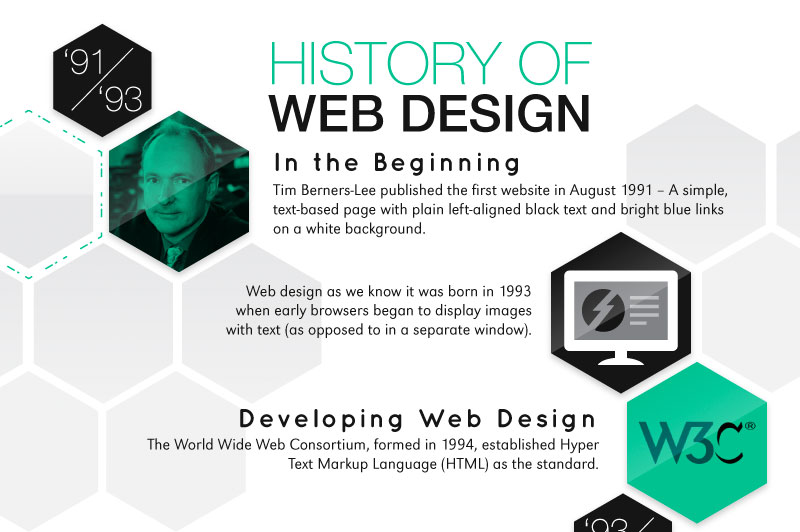The Advancement Of Website Design: Then And Currently
The Advancement Of Website Design: Then And Currently
Blog Article
Writer-Bradshaw Bojesen
In the past, internet sites were basic and concentrated on details. Navigation was direct, and style was for desktops. Now, individual experience is essential. Data overviews designs for very easy navigating. Responsive designs suit various devices. Today, dark mode reduces strain, and minimal food selections boost navigation. Interactive functions engage users, and strong visuals attract attention. AI combination improves involvement. See how style has evolved to boost your online trip.
Early Days of Website Design
In the very early days of website design, simplicity preponderated. Web sites were basic, with minimal colors, fonts, and formats. The emphasis got on providing details instead of fancy visuals. Users accessed the internet with slow-moving dial-up connections, so speed and functionality were essential.
Navigating https://www.fool.com/the-ascent/small-business/marketing-automation/articles/types-of-marketing-strategies/ were straightforward, generally located on top or side of the page. Sites were designed for desktop computers, as mobile surfing wasn't yet common. Content was king, and developers prioritized simple readability over complex design components.
HTML was the main coding language utilized, and designers had to work within its restraints. Computer animations and interactive attributes were marginal compared to today's requirements. Sites were static, with little vibrant web content or personalized customer experiences.
Increase of User-Focused Design
With the advancement of site layout, a change in the direction of user-focused style concepts has actually become progressively famous. Today, producing websites that focus on customer experience is essential for involving visitors and attaining company goals. User-focused style involves recognizing the demands, preferences, and behaviors of your target market to customize the site's layout, material, and includes as necessary.
Developers currently carry out complete research study, such as customer studies and use screening, to gather understandings and feedback directly from individuals. This data-driven approach helps in developing user-friendly navigating, clear calls-to-action, and aesthetically appealing user interfaces that resonate with visitors. By placing the individual at the center of the layout process, internet sites can deliver a much more tailored and delightful experience.
Responsive design has also become an essential aspect of user-focused style, making certain that web sites are maximized for numerous gadgets and screen sizes. This adaptability boosts availability and use, accommodating the diverse methods users engage with web sites today. In essence, the surge of user-focused design signifies a shift in the direction of developing digital experiences that focus on the demands and expectations of completion individual.
Modern Trends in Web Design
Check out the most up to date fads forming web design today. One famous pattern is dark setting style, providing a sleek and modern appearance while lowering eye pressure in low-light atmospheres. Another vital pattern is minimal navigating, streamlining menus and boosting individual experience by concentrating on essential elements. Incorporating micro-interactions, such as animated switches or scrolling effects, can create an extra engaging and interactive site. Responsive design remains essential, guaranteeing smooth customer experiences throughout different tools. Furthermore, using bold typography and asymmetrical designs can include aesthetic rate of interest and draw attention to specific web content.
Incorporating AI technology, like chatbots for consumer support or customized suggestions, improves customer interaction and improves procedures. Availability has also end up being a considerable fad, with developers focusing on comprehensive design techniques to deal with varied individual demands. Embracing sustainability by maximizing internet site performance for speed and performance is an additional emerging pattern in web design. Collaborating with individual comments and information analytics to iterate and boost style constantly is crucial for staying appropriate in the ever-evolving digital landscape. By welcoming these contemporary patterns, you can create an aesthetically attractive, easy to use internet site that resonates with your target market.
Final thought
As you review the evolution of internet site layout from the early days to currently, you can see exactly how user-focused style has actually come to be the driving force behind contemporary trends.
Accept the journey of change and adjustment in web design, constantly maintaining the individual experience at the forefront.
Stay current with the latest trends and technologies, and never quit developing your approach to develop aesthetically sensational and easy to use sites.
Develop, adapt, and create - the future of web design remains in your hands.
